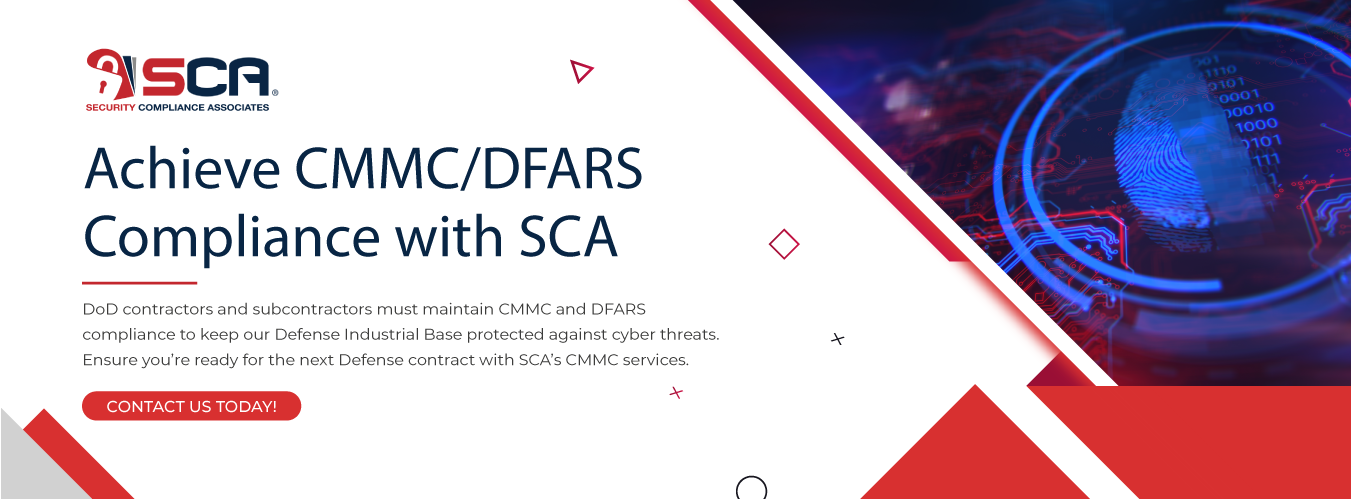
- September 18, 2023
- Brian Fischer
- 285 Views
- 0 Likes
- Blog, Uncategorized
Understanding CMMC Compliance: What You Should Know
The term “CMMC” stands for Cybersecurity Maturity Model Certification. It’s a critical framework for protecting sensitive information in the defense industrial base (DIB). To dive deeper into CMMC, we need to understand why it’s essential, its basics, how different contractors can determine their required CMMC level, and how to prepare for compliance assessments. In this blog post, we will explore these aspects and more, with sources to back up the information.
What is CMMC Compliance?
CMMC is designed to ensure that defense contractors are in full compliance with current security requirements, aimed at safeguarding sensitive defense information. This certification is poised to become an integral part of DoD contracts, impacting organizations handling Controlled Unclassified Information (CUI) and Federal Contract Information (FCI).
At its core, CMMC compliance revolves around three primary objectives:
Protecting Sensitive Defense Information: CMMC seeks to fortify the defenses against cyberattacks and the threats posed by nation-state actors, ensuring the safeguarding of critical defense data.
Establishing a Unifying Cybersecurity Standard: CMMC sets a standardized cybersecurity benchmark for all defense contractors, promoting consistency and efficiency in security practices.
Enforcing Accountability: It places a firm responsibility on defense companies to uphold stringent cybersecurity measures, ensuring the protection of government data.
It is crucial for organizations to understand the intricacies of this compliance framework and prepare accordingly.
The Need for CMMC Compliance
The need for CMMC compliance arises from the increasing threats to sensitive defense-related information. Cyberattacks and data breaches have become more sophisticated and frequent, making it crucial to safeguard classified and unclassified information. The U.S. Department of Defense (DoD) recognized this growing threat and introduced CMMC to enhance cybersecurity practices within the DIB.
The Basics of CMMC
CMMC is not a one-size-fits-all approach. It comprises multiple maturity levels, each with specific cybersecurity requirements. Understanding these levels and their respective requirements is fundamental to achieving compliance.
Mapping CMMC Levels to Requirements
To determine the right CMMC level for your organization, you’ll need to map your existing cybersecurity practices and the types of data you handle to the appropriate level. It’s not a one-size-fits-all approach; instead, it requires a thoughtful evaluation of your current cybersecurity practices and the nature of the data you handle. This process involves a meticulous mapping of your existing security measures to the corresponding CMMC levels.
You’ll need to consider the sensitivity of the data in your possession, the potential risks associated with its compromise, and your organization’s cybersecurity capabilities. Are you dealing with Controlled Unclassified Information (CUI) that demands stringent protection, or is your focus more on safeguarding Federal Contract Information (FCI)?
By aligning your practices with the appropriate CMMC level, you ensure you’re not overinvesting in unnecessary security measures or leaving critical vulnerabilities unaddressed. It’s a strategic approach that helps organizations balance security, compliance, and operational efficiency.
How does CMMC Differ from NIST 800-171?
While CMMC and NIST 800-171 may share the same set of 14 levels and 110 controls, their key distinction lies in how they approach cybersecurity compliance within the defense industrial base (DIB). NIST 800-171 provides guidelines and recommendations for securing Controlled Unclassified Information (CUI) within the DIB. It serves as a comprehensive framework for organizations to enhance their cybersecurity posture.
On the other hand, CMMC takes a step further by introducing a certification process. It prescribes the same controls and mandates assessments and certifications, making it a more stringent and verifiable compliance model. CMMC’s tiered approach, ranging from basic cybersecurity hygiene (Level 1) to advanced protection against advanced persistent threats (Level 5), allows organizations to tailor their security measures to their specific risks.
While both frameworks are built on the same foundation, CMMC brings an added layer of rigor and assurance to the table, ensuring that contractors are not only following best practices but also proving their compliance through assessments.
Related Content: SCA Security Strengthens Cybersecurity Expertise with New Hire in Penetration Testing and Vulnerability Assessments
CMMC Assessment Process
The CMMC assessment process is a structured and comprehensive evaluation of an organization’s cybersecurity practices to determine its compliance with the framework. The first step is to choose an accredited CMMC Third-Party Assessor Organization (C3PAO). These assessors are authorized by the CMMC Accreditation Body (CMMC-AB) and have the expertise to conduct CMMC assessments. Before the actual assessment, the organization and the assessor engage in a preparatory phase. This involves scoping the assessment, defining the assessment boundaries, and agreeing on the plan.
Then, the assessment team, led by the C3PAO, conducts an on-site evaluation of the organization’s cybersecurity practices. They review policies, procedures, and technical implementations to assess compliance with the CMMC requirements. During the assessment, the assessors collect evidence to support their findings. This evidence includes documentation, records, and interviews with personnel to verify that cybersecurity practices align with the chosen CMMC level.
After the on-site assessment, the C3PAO prepares a detailed assessment report. This report outlines the organization’s compliance status, identifies any deficiencies or vulnerabilities, and provides recommendations for improvement. The organization is assigned a score based on the assessment findings. If the organization meets all the requirements for its chosen CMMC level, it can receive certification. If there are deficiencies, the organization must address them and undergo a re-assessment. The C3PAO submits the assessment report and findings to the CMMC-AB for certification review. The CMMC-AB makes the final decision regarding certification issuance.
CMMC certification is not a one-time achievement. Organizations are required to maintain ongoing compliance and undergo periodic assessments to ensure that they continue to meet the CMMC requirements. The CMMC assessment process is rigorous and may vary in complexity depending on the chosen CMMC level. The ultimate goal is to enhance organizations’ cybersecurity posture in the defense industrial base, ensuring the protection of sensitive information and reducing cybersecurity risks.


